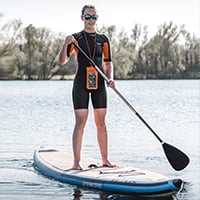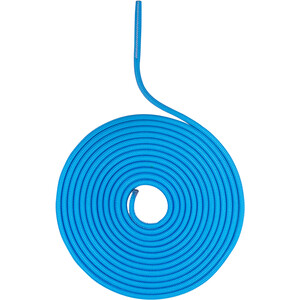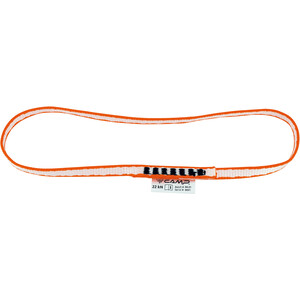Sewn slings
A sewn sling is one of the most adaptable pieces of equipment available. Slings function with bungie cords, quickdraws, cams, nuts, and a climber rope to keep you safe, so be sure you don't run out in an emergency! Sewn slings from all of your favorite brands are available here.
Uses of Sewn slings
Slings can be used to attach yourself to anchors, create equalized anchor systems, tie off natural defenses such as trees and wedged chockstones, make an autoblock knot, and clip onto the rope and gear to minimize the rope drag.
There are numerous other applications, such as hauling systems, chest harnesses, personal safeguards, and so much more. The planned use of the sling will help you choose the right type and size. Fortunately, slings are adaptable, and the same sling can be employed in a variety of situations.
Moreover, sewn slings come in variety of options. These can be flat or tubular webbing that has been sewn into a loop. The webbing comprises of either polyamide (nylon) or polyethylene (dynex, dyneema, spectra, aramid etc.). Both materials are extremely strong and lightweight, but they have a few major distinctions.
The first sewn slings were the knotted ropes
Climbers' earliest slings were essentially short pieces of thin rope and cord twisted into a closed - loop system. However, the usage of durable nylon webbing in the 1960s gave rise to better, longer, and lighter slings for climbing. Climbing equipment manufacturers started sewing slings in the mid-1970s by overlaying and stitching the two sides of a length of webbing.
Benefits of Sewn slings
The most essential gear of climbers, sewn slings have multiple benefits. Some of these are as below;
- Provides as a full-strength extension of a harness's "tie in point."
- Spreads a rappel device.
- While plunging into deep bodies of water, this provides for a clean disengagement.
- When attaching to anchors, it provides quick and adaptable alternatives.
- Aids in partner rescue, pick-offs, and anchoring.
- These absorb energy in the case of an anchor collapse.
Lifespan of Sewn Slings
The real longevity depends on how often you use it and whether or not it sustains damage. So, inspect slings and consider replacing them if you find any of the following conditions;
- A tear or a hole in the sling.
- Areas that have been burned, singed, or melted
- Wearing down in the sling or in the stitching
- Considerable fading from sun exposure or discoloration from interaction with harmful fluids.
- Furthermore, any sling involved in a serious fall should be replaced.
If you have any questions regarding the reliability of your equipment, discard of it.


































